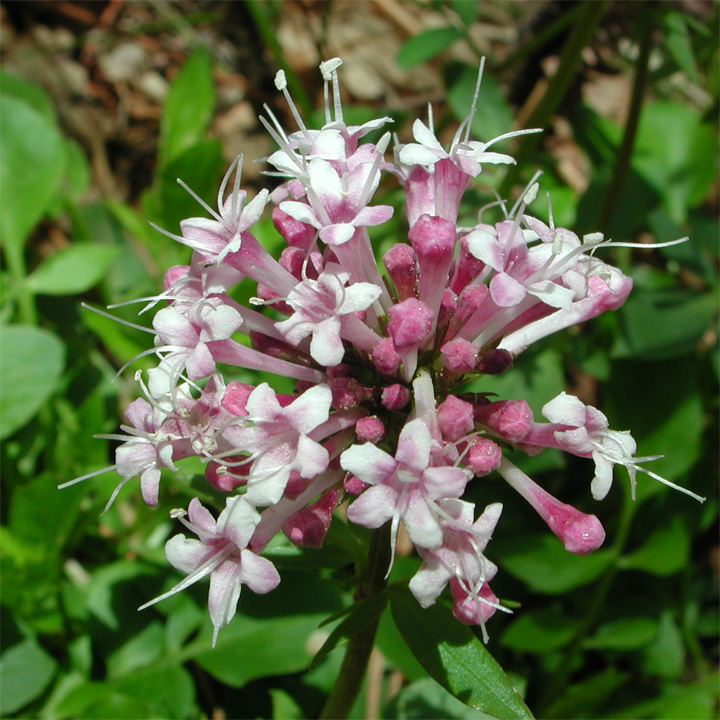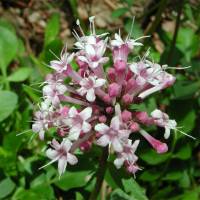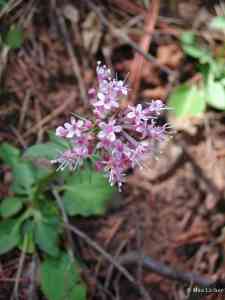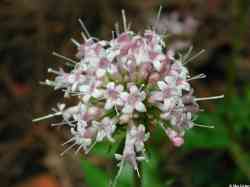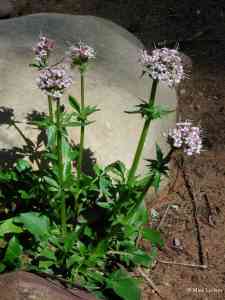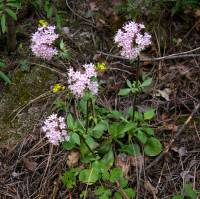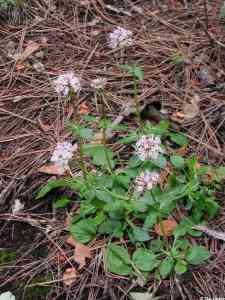Duration: Perennial
Nativity: Native
Lifeform: Forb/Herb
General: Herbaceous perennials, to 45 cm tall, stems leafy to subscapose distally, herbage glabrous to puberulent, especially at the nodes, plants with an elongate, strongly scented rootstock.
Leaves: Opposite, cauline blades sessile or subsessile, pinnate or pinnately parted, with very few, narrow, mostly entire divisions or leaflets, basal blades petiolate, broadly elliptic, ovate, or suborbicular, with rounded to subcordate or wedge-shaped bases and entire margins, leaves firm, surfaces with inconspicuous or spreading lateral veins.
Flowers: Purple to pink to white, corollas tubular-funnelform with 5 rounded lobes, 7-13 mm long or more, with hairy throats, the tubes swollen on one side, calyx at first involute and later spreading, the tube adnate to the ovary with a limb of pappus-like bristles, these elongate and spreading in fruit, stamens 3, exserted, the stamens and anthers whitish, styles solitary, stigmas 3-lobed, inflorescences borne in short, dense panicles or clusters, these subtended by whorled, leaf-like bracts, the bracts shiny and bright green, the flowering stems otherwise mostly naked (subscapose), at anthesis inflorescences are usually short and compact, becoming more open and elongate in fruit.
Fruits: Achene, glabrous to puberulent.
Ecology: Found on rich, moist soils in coniferous forests, from 4,500-8,000 ft (1372-2438 m); flowering April-July.
Distribution: Arizona, Utah.
Notes: The rounded globes of the inflorescences hold lovely purple flowers with long throats and 5 lobes, each with exserted white stamens (and anthers). The whorled leaf-like bracts are exuberant and showy on the otherwise mostly naked flowering stems rising above the leaves, the bracts (and to a lesser extent, the basal leaves) are bright green with a shiny surface, and the margins of the cauline leaves are deeply toothy and jaggedly lobed.
Ethnobotany: Specific uses for this species are unknown, but other species in the genus have uses; root salve applied to limbs for edema.
Etymology: Valeriana is a medieval Latin name either referring to the personal name Valerius (which was a fairly common name in Rome, Publius Valerius being the name of a consul in the early years of the Republic), or to the country of Valeria, a province of the Roman empire, and arizonica means of or from Arizona.
Synonyms: None
Editor: LCrumbacher2012


